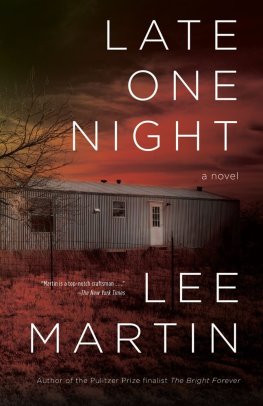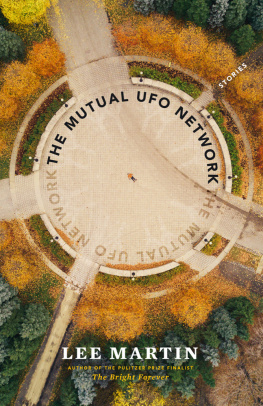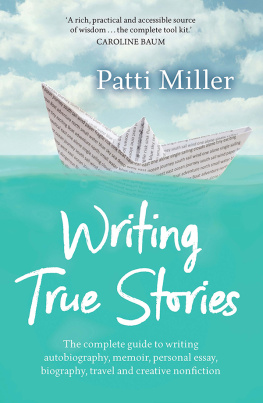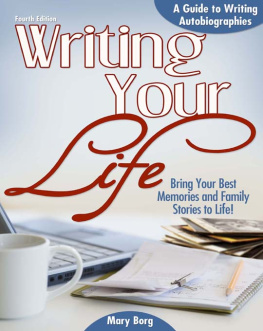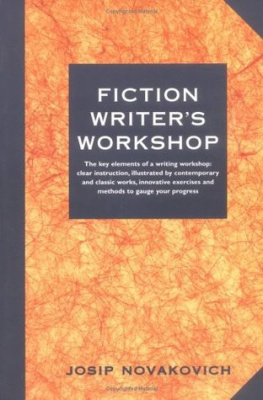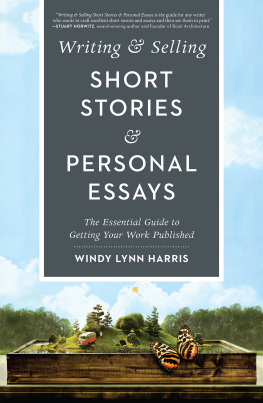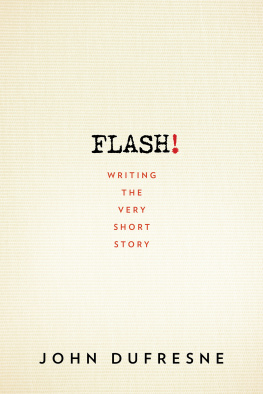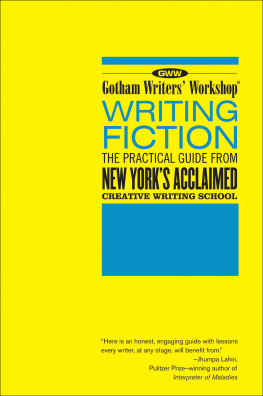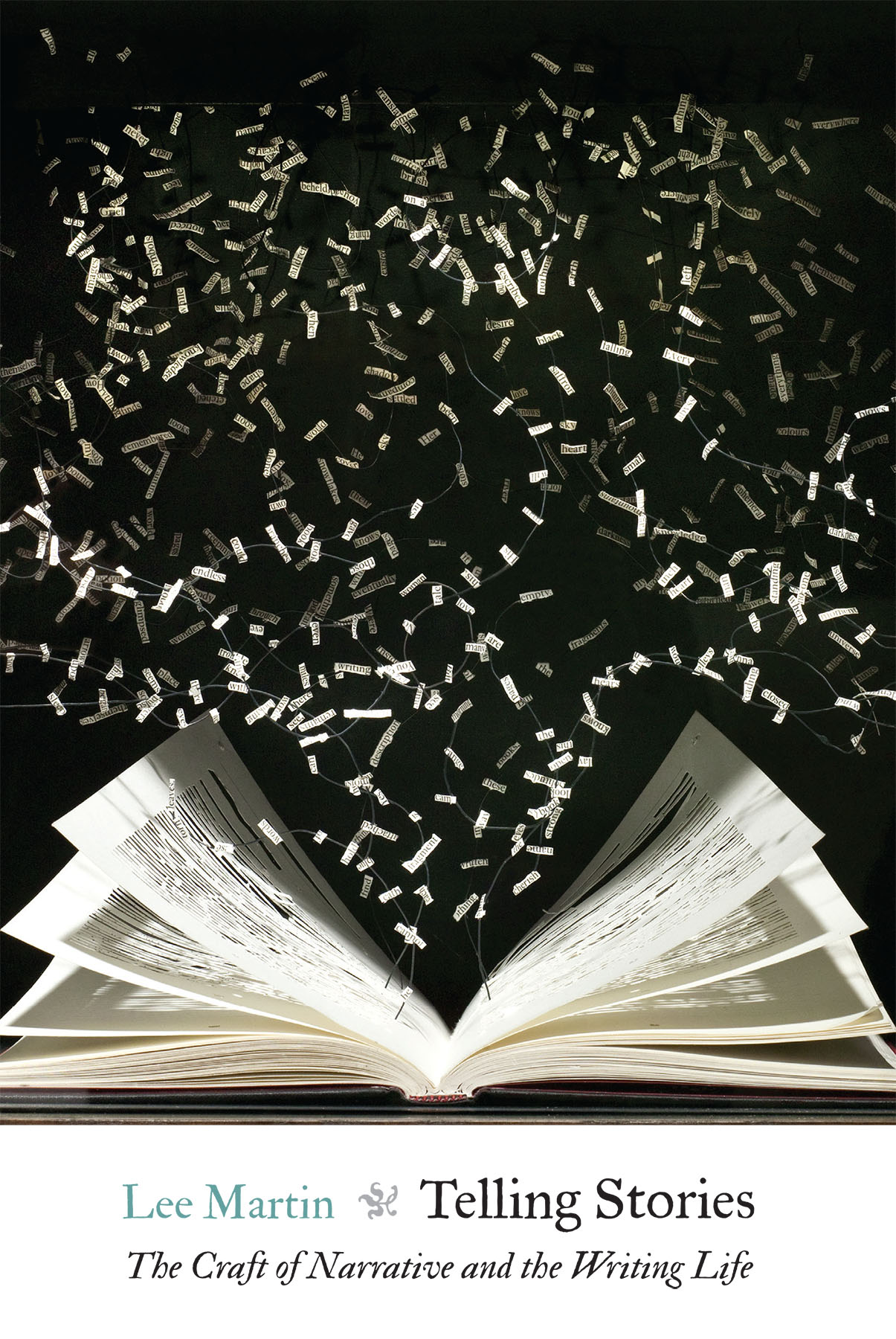
Why shouldnt good writing be hard? Its our attempt at salvation, Lee Martin says in this exceptional book. Martin, through craft lessons, exercises, and literary examples, helps writers discover salvation one carefully selected word at a time.
Sue William Silverman, author of Fearless Confessions: A Writers Guide to Memoir
Lee Martin has long been one of my favorite writers of fiction and memoir, and now hes one of my favorite writers of advice about the writers craft. Everyone who writes, or wants to, should read this wise and inspiring book.
David Jauss, author of On Writing Fiction
Copyright 2017. University of Nebraska Press. All rights reserved. May not be reproduced in any form without permission from the publisher, except fair uses permitted under U.S. or applicable copyright law.
EBSCO Publishing : eBook Collection (EBSCOhost) - printed on 4/15/2022 6:17 PM via
AN: 1581624 ; Lee Martin.; Telling Stories : The Craft of Narrative and the Writing Life
Account: pviewuni
Telling Stories
EBSCOhost - printed on 4/15/2022 6:17 PM via . All use subject to https://www.ebsco.com/terms-of-use
Telling Stories
The Craft of Narrative and the Writing Life
Lee Martin
University of Nebraska Press | Lincoln and London
EBSCOhost - printed on 4/15/2022 6:17 PM via . All use subject to https://www.ebsco.com/terms-of-use
2017 by Lee Martin. Communal and Personal Voices originally appeared in The Rose Metal Press Field Guide to Writing Flash Nonfiction, ed. Dinty W. Moore (Brookline MA : Rose Metal Press, 2012).
Cover designed by University of Nebraska Press; cover image: The Book of the Lost, 2011, artwork by Su Blackwell.
Author photo courtesy of author.
All rights reserved.
Library of Congress Cataloging-in-Publication Data
Names: Martin, Lee, 1955 author.
Title: Telling stories: the craft of narrative and the writing life / Lee Martin.
Description: Lincoln: University of Nebraska Press, 2017.
Identifiers: LCCN 2017013385 (print)
LCCN 2017029103 (ebook)
ISBN 9781496202932 (epub)
ISBN 9781496202949 (mobi)
ISBN 9781496202956 (pdf)
ISBN 9781496202024 (paperback: alk. paper)
ISBN 1496202023 (paperback: alk. paper)
Subjects: LCSH : Authorship. | Creative writing. | Narration (Rhetoric) | Storytelling. | BISAC : LANGUAGE ARTS & DISCIPLINES / Composition & Creative Writing. | LANGUAGE ARTS & DISCIPLINES / Authorship.
Classification: LCC PN 145 (ebook) | LCC PN 145 . M 38 2017 (print) | DDC 808.02dc23
LC record available at https://lccn.loc.gov/2017013385
The publisher does not have any control over and does not assume any responsibility for author or third-party websites or their content.
EBSCOhost - printed on 4/15/2022 6:17 PM via . All use subject to https://www.ebsco.com/terms-of-use
For Cathy, who understands when I go away to play with words
EBSCOhost - printed on 4/15/2022 6:17 PM via . All use subject to https://www.ebsco.com/terms-of-use
Contents
EBSCOhost - printed on 4/15/2022 6:17 PM via . All use subject to https://www.ebsco.com/terms-of-use
My fourth grade teacher once told me I had no imagination. Ive never forgotten. This is a book for all those who dare to dream and to devote themselves to the craft of writing. My lifelong apprenticeship started when I first fell in love with the power of story. Along the way Ive had the privilege of learning from those more advanced than I and passing on what Ive learned to others. Ive been blessed with a teaching career that now approaches its thirty-sixth year. Im so grateful for everyone Ive met along my journey. To try to name you all would be a fools game. If I sat in your classroom or you in mineif we had the chance to talk about writing, wherever we might have beenyou had a part in this book. For that I thank you, and I wish you a happy life, rich with the stories you have to tell. Im so blessed to be a part of this family of writers. May we all keep doing the good work. Peace and love.
EBSCOhost - printed on 4/15/2022 6:17 PM via . All use subject to https://www.ebsco.com/terms-of-use
After years of writing both fiction and memoir, Ive come to believe that the term storytelling best fits what I do. Sometimes I tell stories about things that really happened in my life, sometimes I tell stories about things that really happened but with a healthy dose of invention added to the tale, and sometimes I make everything up by using my imagination. The point is that no matter the approach I take to the material at hand, Im always relying on the tools of the storyteller to construct an interesting narrative. If I do it well, the story will also take me to a place in which I know something I didnt before the telling began.
Id like to look, then, at a few tools in the storytellers toolbox that he or she cant do without. Whether you like to think of yourself as a writer of fiction or memoir, or both, here are some techniques that should serve you well.
The Art of the Scene
Your first task as a storyteller is to persuade a reader. In both fiction and nonfiction we have to convince readers that whats happening on the page is authentic. We do that through the well-constructed scene. String enough well-constructed scenes together in a causal sequence and youll invite your readers to exist within that realm. What sort of material deserves the space that a scene allows? Moments made up of contradictions and turns, moments unlike other moments, moments that shake characters in some way or the other until theyre slightly different at the end than they were at the beginning.
The Art of Characterization
Characters are interesting when theyre made up of contradictions. Its those contradictions and the writer who recognizes them that create the most memorable characters in works of fiction and nonfiction. If we give our characters free willif we dont fully know them too soonthey can take us to some interesting places that can either illuminate or complicate, or do both things at once, the thrust of our exploration of any particular subject. Our characters have to be able to surprise us, and the plot of a good story usually puts enough pressure on them until they cant help but reveal who they really are. The personal life of every individual is based on secrecy, Chekhov writes in The Lady with the Pet Dog. A good story doesnt allow that secrecy to stand. A good story strips it away and leaves the character, to borrow from Woody Allen, without feathers.
The Art of the Detail
A combination of sensory details can fully immerse readers in a scene and establish a writers authority. Readers are more willing to trust and follow a writer when they feel that the writer has a great deal of confidence in what he or she is portraying on the page. Scenes need to happen in specific locales; otherwise, they can seem not to have happened at all. Sensory details are the tools of the trade that the writer uses to convince us that something really happened. A carefully chosen detail can also provide an indirect path toward what the writer has come to say. Dont say, Im going to write a story of the loss of faith. Instead, la Flannery OConnor in Good Country People, say: Im going to write about a woman with a wooden leg. Im going to see where that leg might take me.
The Art of Point of View
A good story locates itself within a particular consciousness. The interior journey of a point of view character provides an arc that coexists with the arc of the narrative. Readers want not only know to what happened but to also know the person who lived through the experience. Its the combination of the two that lends the narrative its significance.


